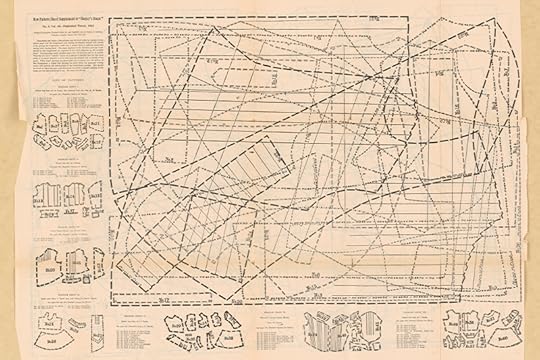It’s Sew Complicated
This article also appears in the January-February issue of the Library of Congress Magazine.
For 10 cents a copy, Harper’s Bazar magazine opened up a wide world for the modern woman of 1902.
In its March issue, there are essays on the growing women’s movement and advice on husband management. There are European travelogues, bedtime stories, home improvement suggestions, fiction series and spreads illustrating the latest styles (one indelicately headlined “Fashions for Old Ladies”).
For DIYers looking to save a buck on clothing, Harper’s also offered help, tucked between the regular “Recent Happenings in Paris” column and a how-to titled “Poultry Raising as a Vocation.”
There, a large foldout sheet lays out sewing patterns for the thrifty homemaker to use in making clothes for the family — “at the lowest computation,” Harper’s assured readers, a value of $3.50.
 Harper’s 1902 foldout sheet with 60 designs for pieces of clothing.
Harper’s 1902 foldout sheet with 60 designs for pieces of clothing.When unfolded, the sheet reveals a bewildering tangle of dots, dashes, lines, X’s and ovals that crisscross a total of 1,134 square inches of paper in an unholy mess covering both front and back. The marks delineate patterns for a whopping 60 different component parts of articles of clothing.
From the chaos, nine outfits could emerge: a girl’s bodice, a baby’s petticoat, a boy’s shirtwaist, a girl’s corset cover, a little girl’s dress, a dress for a girl of about 12, a woman’s lawn waist, a tucked fancy lawn waist and a fancy stock and tie.
The trick, of course, was making them happen. The magazine provided instructions, perhaps easier read than done: Simply place transparent paper over a pattern and trace the lines with a pencil or, alternately, place the pattern itself over a sheet of paper and use a tracing wheel to copy the design. The seamstress then would extrapolate the proper size of each piece, take out the sewing machine and, voilà, the kids have new clothes.
Today, with the benefit of hindsight and easy modern clothing options, we can admire the resourcefulness of any Harper’s reader willing to tackle that job and, then, silently offer up a few words of gratitude: Thank goodness for off the rack.
Subscribe to the blog— it’s free!
Library of Congress's Blog
- Library of Congress's profile
- 73 followers



